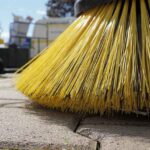
Cleaning is a fundamental aspect of our daily lives, and soap plays a pivotal role in this process. Have you ever wondered about the science behind soap and how it works to remove dirt and grime? In this comprehensive guide, we’ll delve into the fascinating world of the science of cleaning, focusing on the mechanisms through which soap achieves its cleaning prowess. From the molecular level to the practical applications in our homes, let’s unravel the science that keeps our surroundings clean and hygienic.
Dirt isn’t just a visual nuisance; it consists of various substances like oils, greases, and particles that adhere to surfaces. Understanding the composition of dirt is crucial to formulating effective cleaning agents. Dirt sticks to surfaces due to adhesive forces. Oils and greases, for example, adhere to surfaces because of their molecular properties. While water can help remove some types of dirt, it struggles with substances like oils that don’t readily mix with water. This is where soap comes into play.
Click here to have a glance at our post on How to Clean and Disinfect Your Makeup and Beauty Products
The Structure of Soap Molecules
Hydrophilic and Hydrophobic
Soap molecules have a dual nature. One part of the molecule is hydrophilic (water-attracting), and the other is hydrophobic (water-repelling).
The Soap Molecule Ballet
When soap is introduced to water and dirt, its hydrophilic end binds with water molecules, while the hydrophobic end attaches to oils and grease. This molecular ballet is the key to soap’s cleaning action.
Formation of Micelles
As soap molecules surround dirt particles, they form structures called micelles. These tiny clusters encapsulate the dirt, allowing it to be easily rinsed away.
Types of Soaps: Beyond Bar and Liquid
Bar Soaps
Traditional and familiar, bar soaps are solid and often used for personal hygiene. They can also be grated and dissolved for various cleaning purposes.
Liquid Soaps
Liquid soaps are versatile and convenient. They come in various formulations, including hand soaps, dish soaps, and multi-purpose cleaning solutions.
Specialized Soaps
Specialized soaps cater to specific needs, such as laundry soap, dishwashing soap, and antibacterial soaps designed for different surfaces and purposes.
Breaking Down Surface Tension
Surface Tension and Water
Water has a natural surface tension that causes it to bead up on surfaces. This makes it less effective at wetting and penetrating dirt.
Soap’s Surface Tension Reduction
Soap disrupts water’s surface tension, enabling it to spread more easily across surfaces. This helps water reach and surround dirt particles for efficient cleaning.
Enhancing Wetting Ability
The reduction of surface tension by soap enhances its wetting ability, ensuring that water can thoroughly coat surfaces and break down dirt.
The Role of Emulsification
The Grease Dilemma
Grease and oils are notorious for repelling water, making them challenging to clean with water alone.
Emulsification with Soap
Soap acts as an emulsifying agent, binding with grease and oil particles and breaking them into smaller droplets. These smaller droplets can then be surrounded by water and rinsed away.
Preventing Re-Deposition
The emulsification process prevents separated grease particles from reattaching to surfaces, ensuring effective removal.
Antibacterial Action
Soap’s Dual Attack
Soap not only lifts away dirt but also plays a crucial role in combating bacteria and viruses. Its hydrophobic end can penetrate the lipid membranes of many microorganisms.
Disruption of Microbial Membranes
When soap encounters microbes, it disrupts their lipid membranes, rendering them unable to function. This dual action of lifting and disinfecting makes soap a potent cleaning agent.
The Importance of Handwashing
Regular handwashing with soap is a simple yet powerful practice for preventing the spread of infections. It not only removes visible dirt but also eliminates unseen microbes.
Here is our post on How to Clean and Care for Your Outdoor Furniture Cushions
Environmental Impact
Biodegradability of Soap
Traditional soaps are often biodegradable, meaning they can break down into harmless substances in the environment. This makes them a more eco-friendly choice compared to certain synthetic detergents.
The Downside of Phosphates
Some detergents, however, contain phosphates that can contribute to water pollution. Choosing phosphate-free or low-phosphate options minimizes environmental impact.
The Rise of Eco-Friendly Soaps
With increasing environmental awareness, there’s a growing market for eco-friendly soaps made from natural ingredients that are gentle on both surfaces and ecosystems.
pH Balance
pH and Cleaning
The pH level of a cleaning agent influences its effectiveness. Most soaps are slightly alkaline, making them versatile for various cleaning tasks.
Avoiding Extreme pH Levels
Extremely acidic or alkaline cleaning agents can damage surfaces. Soap strikes a balance, providing effective cleaning without causing harm.
Soap Scum and Hard Water
In hard water, soap can react with minerals to form soap scum. This can be mitigated with the use of additives or synthetic detergents designed for hard water conditions.
Soap Alternatives
Detergents
Synthetic detergents, while not technically soap, function similarly and have become popular alternatives. They often have specific formulations for different cleaning tasks.
Castile Soap
Castile soap, made from plant oils, is a natural alternative with minimal environmental impact. It’s versatile and can be used for cleaning everything from dishes to floors.
DIY Cleaning Solutions
Homemade cleaning solutions using ingredients like baking soda, vinegar, and essential oils offer a chemical-free alternative for those seeking natural options.
Practical Tips for Effective Cleaning
Read Labels
When selecting cleaning products, read labels to understand their ingredients and choose those that align with your cleaning needs and environmental values.
Proper Dilution
Follow recommended dilution ratios for concentrated cleaning solutions to ensure effectiveness without wasting product.
Test in Small Areas
Before using a cleaning product on a new surface, test it in a small, inconspicuous area to ensure compatibility and prevent potential damage.
Conclusion
In conclusion, the science of cleaning, particularly the role of soap, is an alchemy that transforms mundane routines into potent practices for hygiene and health. Understanding how soap interacts with dirt at the molecular level empowers us to make informed choices for effective and eco-friendly cleaning.
As you embark on your cleaning journey, remember that the magic happens not just in the bubbling lather or the fresh scent but in the microscopic dance of soap molecules orchestrating the removal of dirt and germs. So, armed with the knowledge of the science of cleaning, go forth and create a cleaner, healthier, and more radiant living space. Happy cleaning!







